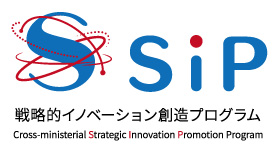B2-01 Establishment of separation and supply system for collected plastics in cooperation with local governments
Principal Investigator
MIYAHARA Nobuo (AMITA Holdings Co., Ltd.)
Research and Development Overview
The objective of this research and development project is to collaborate with local governments to develop a plastic sorting and supply system and establish an "X to Car" model for supplying high-quality recycled materials for automobiles. The specific goals are as follows:
- Material Recycling Rate:
Achieve a 50% material recycling rate in the target region of the model site by FY2027. - Material Recycling Volume:
Reach 10 tons per year of recycled plastic at the model site by FY2027. - Resource Quality Verification:
Establish target values with material manufacturers and verify the physical properties of test products, including MFR (Melt Flow Rate), melt viscosity, tensile properties (yield stress, elongation between chucks, modulus of elasticity), bending properties (bending strength, modulus of elasticity), and b-ESCR (bottle Environmental Stress Crack Resistance). - Enhancing Plastic Product Recyclability.
- Hypothesis Testing and Generalization:
Conduct hypothesis testing and verification to encourage mindset and behavioral changes in consumers regarding recycling.
Key Activities
To achieve goals 1 and 2, the project will work closely with municipalities to implement resource collection through resource recovery stations and in-store collection boxes. Additionally, efforts will be made to establish a system for aggregating and digitizing collected materials through sorting centers. In supplying high-quality recycled materials for automotive applications, polypropylene (PP) has been selected as the target material. For goal 3, physical property measurements of the collected plastics will be conducted to ensure that the recycled materials achieve high toughness equivalent to or exceeding that of virgin materials. This will be pursued through upcycling technologies, including the development of high-toughness technology for general-purpose plastics such as polyrotaxane, using in-situ tensile precision structural analysis, and the establishment of catalytic technologies to generate monomers from biomass-derived raw materials through catalytic informatics for monomer synthesis, leveraging high-throughput synthesis and evaluation technologies.
Goals 4 and 5 will focus on developing plastic products that are designed to be easily recycled while still meeting the required physical standards for automotive applications. At the same time, strategies will be demonstrated to influence consumer mindsets and behaviors, ensuring that recycling becomes a natural consideration when disposing of plastic products.

